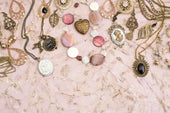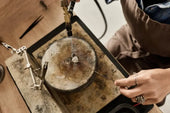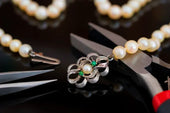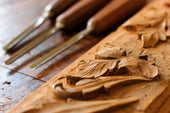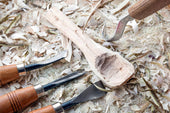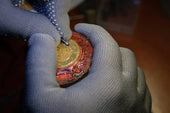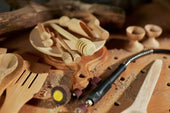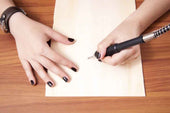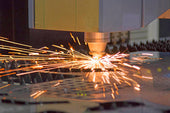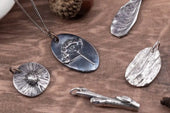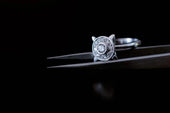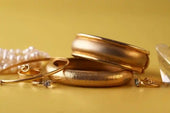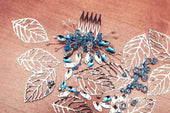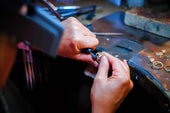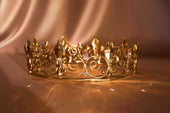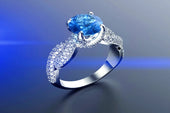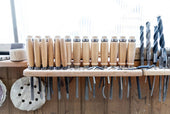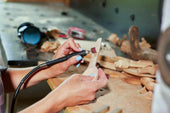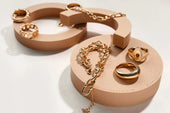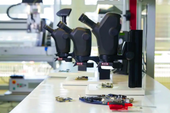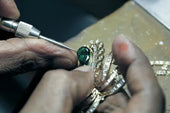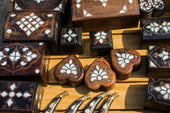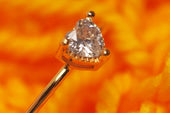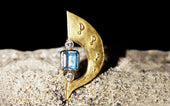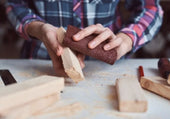Have you ever been mesmerized by a handmade ring or a delicate pendant and thought, “I wish I could make something like that”? Good news — you absolutely can. With the right set of basic tools, even a complete beginner can start crafting beautiful pieces from the comfort of their own home. In this post, we’ll explore 10 must-have tools for beginner jewellery makers — what they do, why they matter, and how to use them effectively.
Jewellery Pliers
Jewellery pliers are the cornerstone of any beginner’s toolkit. Whether you're working with wire, jump rings, or delicate findings, a good set of pliers gives you the control and precision needed to shape, grip, and manipulate materials with ease. Most starter kits include three essential types: chain nose pliers for gripping and bending, round nose pliers for forming loops and curves, and flat nose pliers for creating sharp angles and holding components in place.
These small but powerful hand tools are especially important in wire wrapping, opening and closing jump rings, and adjusting clasps — tasks you’ll encounter often as a jewellery making beginner.

Jewellers Saw Frame
The jeweller's saw frame is an essential tool for anyone serious about creating intricate, custom shapes in sheet metal. Unlike general-purpose saws, a jewellers saw is specifically designed for fine, detailed cutting — perfect for piercing patterns, shaping pendants, or sawing out unique silhouettes in brass, copper, silver, or gold. Its slim, adjustable frame holds delicate blades under tension, allowing you to cut through metal with remarkable accuracy.

Jewellers Cutters
When it comes to working with metal wire, jewellers cutters are your go-to tool for making clean, precise cuts without distorting the material. Unlike standard scissors or hardware snips, these cutters are specially designed for jewellery making, allowing you to trim headpins, eyepins, and wire ends with minimal effort. For beginners, this means smoother finishes, neater wire wraps, and fewer frustrating do-overs.
There are a few types of cutters to consider, but side cutters are the most commonly used in jewellery work. They let you get close to your piece without damaging adjacent components. If you plan to work with thicker gauges of wire, make sure your cutters are rated for the correct hardness to avoid dulling the blades.

Tweezers
Tweezers may seem like a small addition to your jewellery making toolkit, but they play a crucial role in handling tiny components with accuracy and care. Whether you're setting a stone, positioning jump rings, or aligning small beads before soldering, a reliable pair of jewellery tweezers can save you time, frustration, and potential damage to your materials.
Jewellery-grade tweezers come in various tips and lengths — from fine-point for ultra-small tasks to flat or angled tips for gripping larger elements. For beginners, anti-magnetic and anti-static tweezers are especially useful when working with small metal findings or placing elements near soldering stations.

Ball Vise
A ball vise is an invaluable tool when your jewellery designs demand precision, especially in tasks like stone setting, engraving, or intricate filing. This heavy, rounded vise allows you to securely clamp your workpiece while also enabling smooth, 360-degree rotation — giving you full control without needing to constantly reposition your hands. For beginners, this added stability can significantly improve accuracy and reduce hand fatigue.
Though commonly associated with advanced jewellery techniques, a ball vise is just as useful for simple projects. It holds your metal pieces steady while you saw, drill, or engrave, making your workspace safer and your results more professional. Look for a model with a padded or interchangeable jaw system to protect delicate components from scratches or pressure marks.

Rubber Mallet
A rubber mallet is one of the most underrated tools in beginner jewellery making, yet it plays a crucial role when shaping metal without leaving marks. Unlike metal hammers, which can easily dent or mar delicate surfaces, a rubber mallet delivers soft, even blows — perfect for forming rings, bracelets, or curved components while preserving the finish of your metal.
This tool is especially useful when working with annealed (softened) metals, helping to coax them into shape over mandrels, ring sizers, or forming blocks. For beginners, a rubber mallet allows you to experiment confidently with shaping techniques, knowing your piece won’t be unintentionally damaged. It's also ideal for flattening work-hardened wire or smoothing slight warps in metal sheet.

Files & Sanding Sheets
Once your metal is cut and formed, the finishing process begins — and that’s where files and sanding sheets come in. These tools are essential for refining edges, smoothing surfaces, and preparing your jewellery for polishing or soldering. A basic set of jewellery files typically includes a variety of shapes — flat, round, half-round, and needle files — each suited for different contours and crevices in your design.
Sanding sheets, on the other hand, offer a more flexible approach to surface finishing. Starting with coarser grits (like 400) and gradually progressing to finer grits (up to 1200 or beyond) allows you to remove scratches, soften edges, and create a flawless base for polishing.

Hole Puncher
Whether you’re making earrings, pendants, or charms, a hole puncher is a must-have tool for adding precise, clean holes in metal. Unlike drilling, which can be time-consuming and prone to slipping, a jewellery hole puncher offers a quick, controlled way to create uniform openings — perfect for jump rings, hooks, or rivets. Most beginner-friendly punchers are hand-held and can easily pierce through soft metals like copper, brass, and sterling silver up to a certain gauge. Jewellery hole punchers typically come with interchangeable tips in different sizes, allowing for flexibility in your design.

Magnifiers
When it comes to jewellery making, the smallest details often define the quality of your work — and that’s where magnifiers become essential. Whether you're inspecting solder joints, aligning tiny gemstones, or checking for surface imperfections, a good magnifier helps you work with greater accuracy and confidence. For beginners, this tool is especially useful when developing your eye for detail and precision.
There are several types of magnifiers suitable for jewellery making: headband magnifiers for hands-free viewing, desk-mounted lenses with built-in lights, or simple handheld loupes for quick inspection.



